Study Reveals First-Known Fish to Hold Its Breath
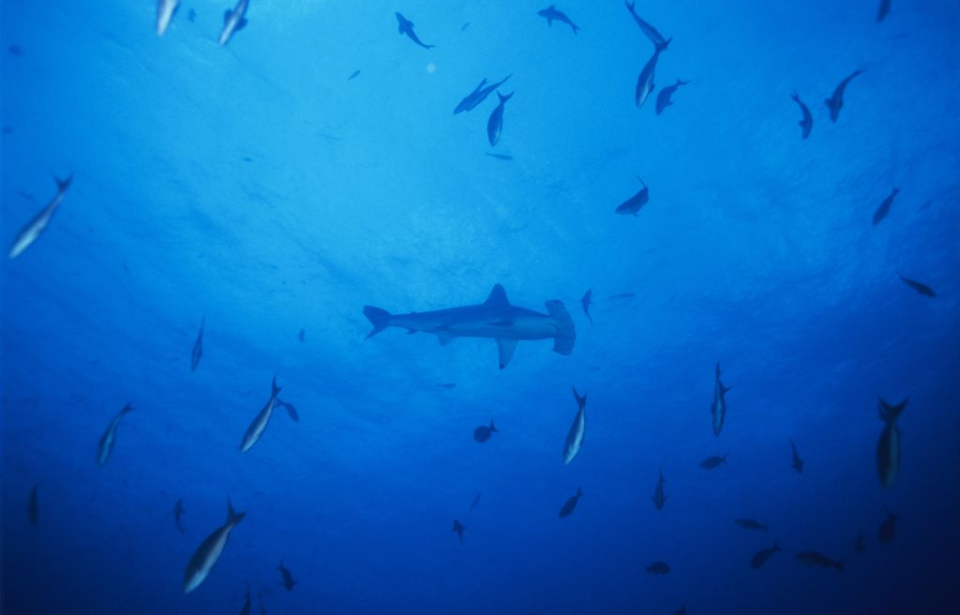
Scientists have uncovered the first-known fish known to hold its breath – and it’s one many of us are already aware of. In a study published to the journal Science on May 11, 2023, the team revealed that the scalloped hammerhead shark holds its breath while diving to catch prey in the cold depths of the ocean.
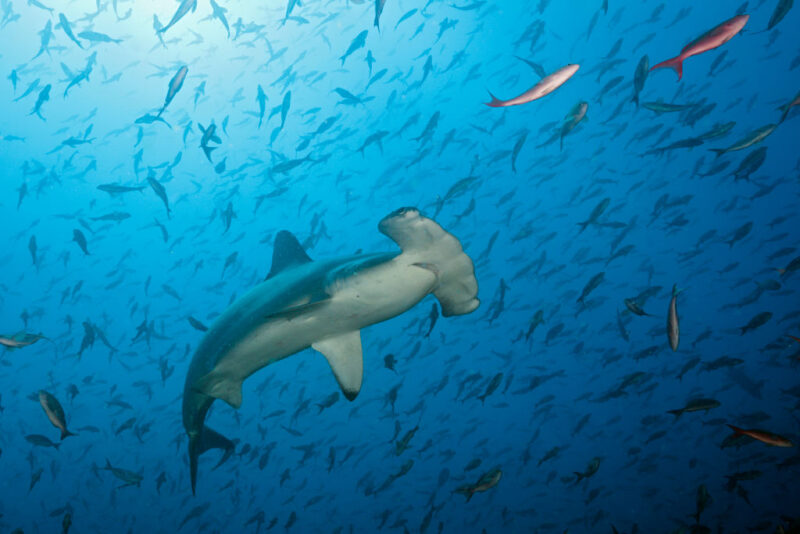
Hammerhead sharks are known to dive to depths up to half a mile below sea level to find prey. While most feed on fish, they often prefer to go after larger animals, such as squid, which reside in deeper parts of the world’s oceans.
The study, titled “Breath holding” as a thermoregulation strategy in the deep-diving scalloped hammerhead shark, has revealed that scalloped hammerhead sharks hold their breath during these dives. The reason? To keep their bodies warm as they journey into colder water.
According to a press release by the University of Hawaii, shark gills serve as “natural radiators” that expose the animal’s muscles, blood and organs to dangerously cold temperatures if not closed. After they equipped scalloped hammerhead sharks with devices programmed to track their depth, muscle temperature, activity levels and body orientation, the team saw the creatures’ muscles stayed warm while diving, yet cooled as they approached the water’s surface.
Further analysis of the data suggested that the sharks must have been closing their gills.
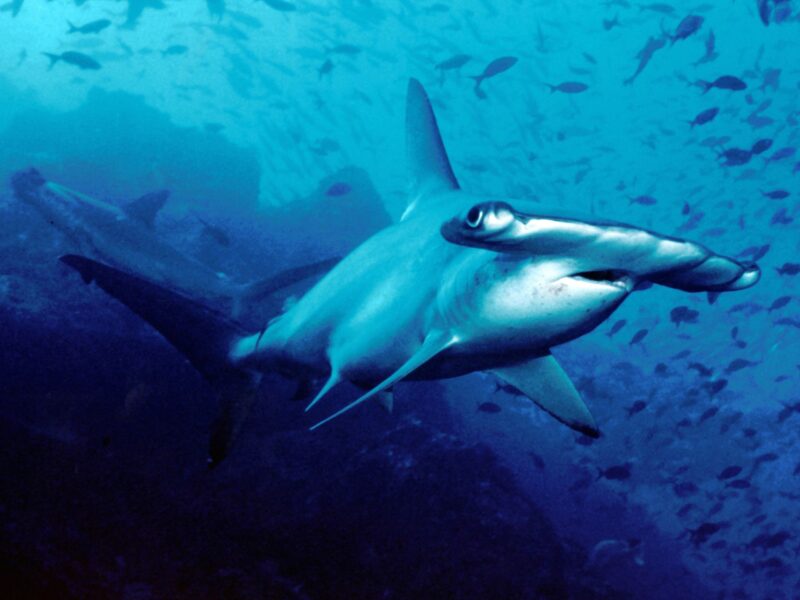
“This was a complete surprise,” Mark Royer, the lead author of the study and a researcher with the Shark Research Group at the Hawaii Institute of Marine Biology, says in the release. “It was unexpected for sharks to hold their breath to hunt like a diving marine mammal. It is an extraordinary behavior for an incredible animal.
“Although it is obvious that air-breathing marine mammals hold their breath while diving, we did not expect to see sharks exhibiting similar behavior,” he continues. “This previously unobserved behavior reveals that scalloped hammerhead sharks have feeding strategies that are broadly similar to some marine mammals, like pilot whales. Both have evolved to exploit deep dwelling prey and do so by holding their breath to access these physically challenging environments for short periods.”
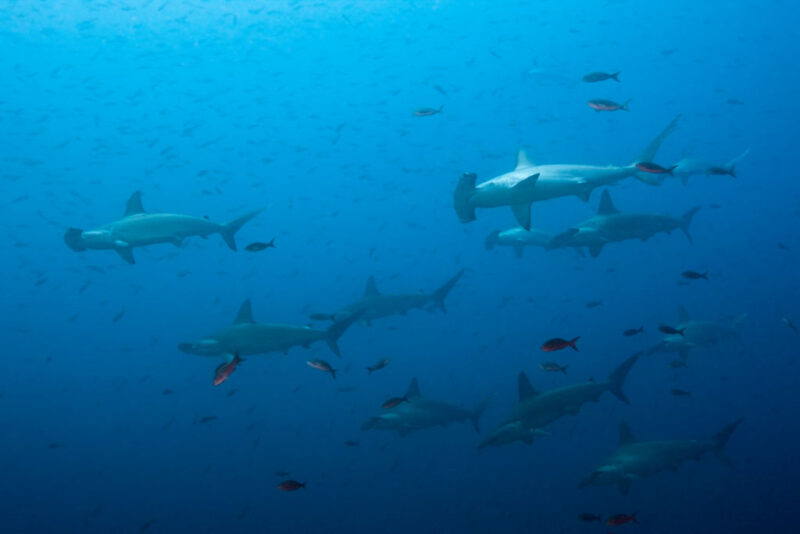
Also known as the bronze, southern and kinky-headed hammerhead, the shark is known to live in warmer climates, particularly throughout southern Asia, the northern coast of Australia, the American East Coast, the Caribbean, Central and South America, and along the coasts of Africa and India.
While the most common species of hammerhead shark, the scalloped is listed as critically endangered by the International Union for Conservation of Nature (IUCN). Due to their high metabolic rate, they spend the majority of their time in search of food, with their go-to prey being fish, squid and octopus. However, they are known to be opportunistic predators.
Due to their declining population, conservation efforts have been put in place to try and save the species. Fishing bans have been enacted in several areas, while some countries have made it illegal to sell or store the sharks, to prevent the sale of their fins.
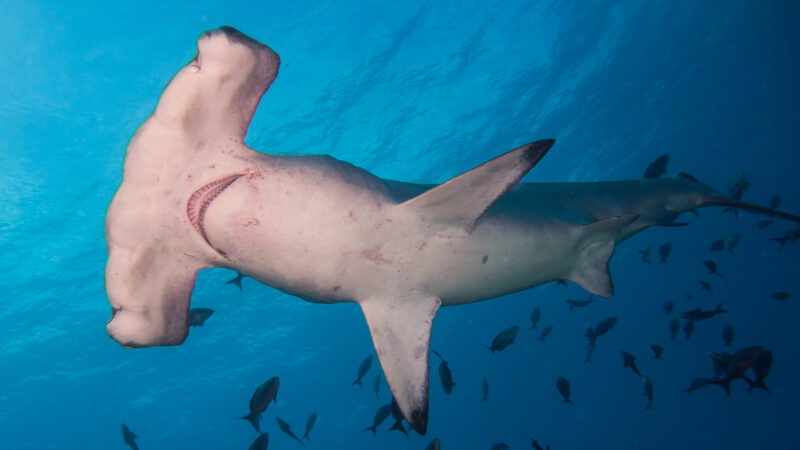
“Holding their breath keeps scalloped hammerhead sharks warm but also shuts off their oxygen supply,” Royer explains in the release. “So although these sharks hold their breath for an average of 17 minutes, they only spend an average of four minutes at the bottom of their dives at extreme depths before quickly returning to warmer, well-oxygenated surface waters where breathing resumes.
He adds that this discovery has changed how science views the creatures.
“This discovery fundamentally advances our understanding of how scalloped hammerhead sharks are able to dive to great depths and withstand frigid temperatures in order to capture prey,” he says, adding, “This new and detailed understanding of scalloped hammerhead physiology and ecology enhances our ability to effectively manage and conserve this iconic species.”
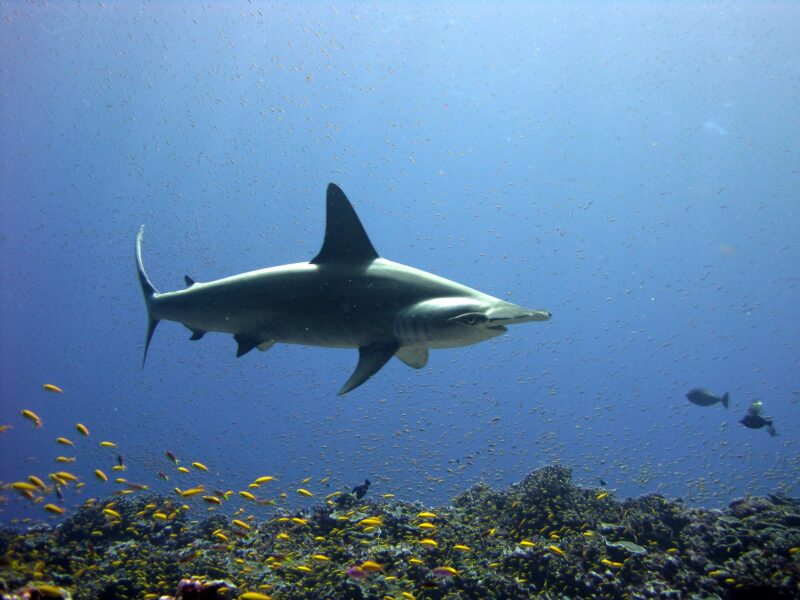
An interesting point brought up by José Emilio Trujillo of the University of Otago and Phillip Morrison of Vancouver Island University surrounds the question of how scalloped hammerhead sharks can be this agile and athletic with so little oxygen.
More from us: Greenland’s Ice Sheet Is Melting Faster Than Previously Thought
Speaking with NewScientist, Morrison shares that the study’s findings are “worthy of further investigation,” adding that, “If [the researchers are correct, I think that this is one of the coolest physiological traits among sharks.”
